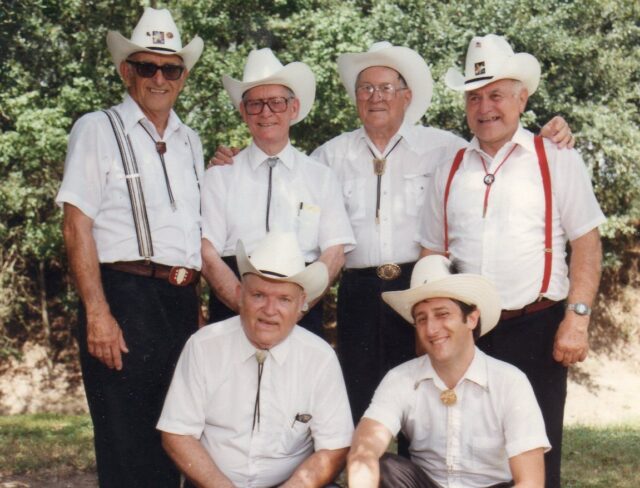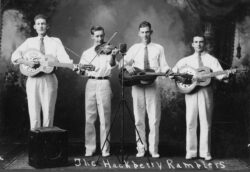Eighteen Years of Hackberry Rambling
The gift of playing with venerable innovators
Published: September 1, 2020
Last Updated: April 21, 2021
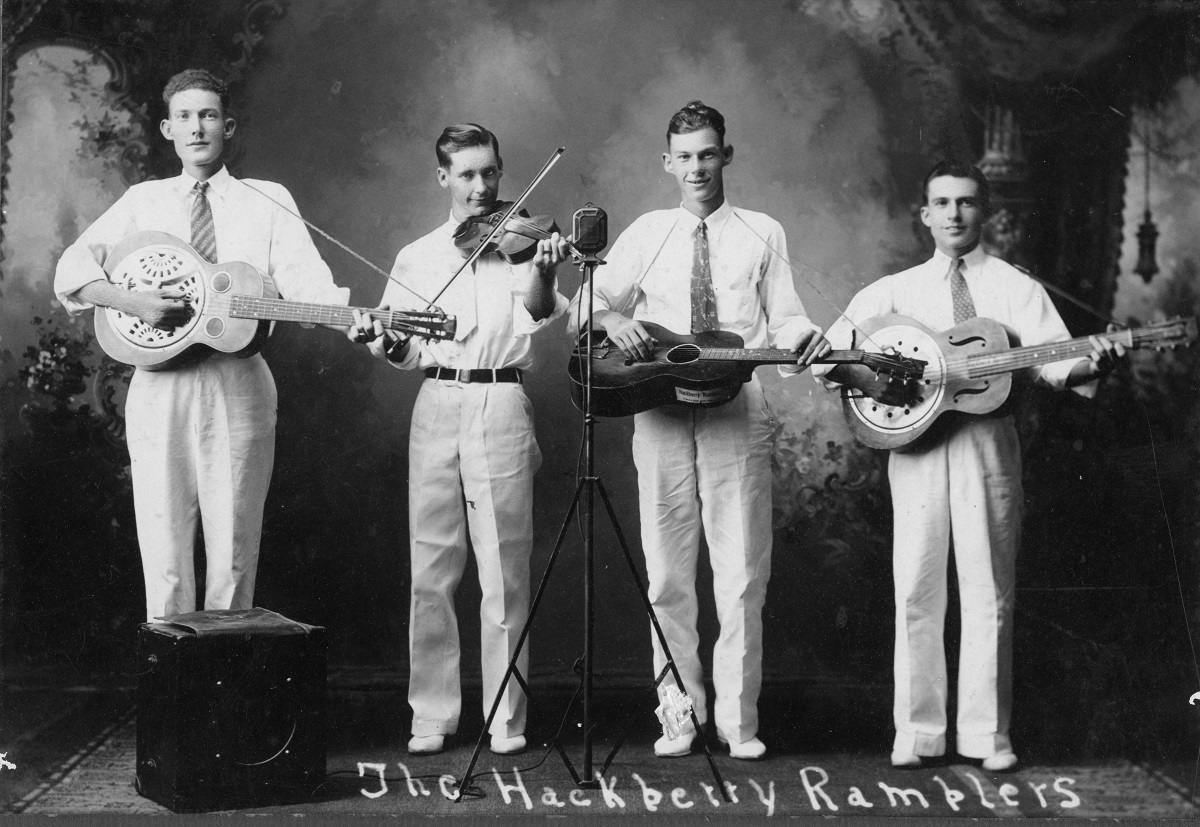
Luderin Darbone
The Hackberry Ramblers in the 1930s: from left, Floyd Rainwater, Luderin Darbone, Lonnie Rainwater, and Lennis Sonnier.
I’d heard of this historic Cajun and western swing band, founded in 1933, that still featured its two original founders, Luderin Darbone and Edwin Duhon. I knew of their rich history: the first Cajun band to use electronic amplification, and to expand the Cajun repertoire, sung in French, by adding English material, including western swing, old-time country, blues, jazz, vaudeville, Hawaiian-fad novelty songs, and more. I knew that, during the 1930s, the Ramblers had recorded nearly eighty songs in the 78-rpm format, including the first version of “Jolie Blonde” under that title, as an acoustic trio with two guitars and a fiddle. By 1947 they’d expanded to include electric guitar, bass, drums, lap steel, trumpet, and saxophone alongside Luderin Darbone’s ever-present, agile, inventive fiddling. The ’60s found them adapting again, reprising the classic Cajun-band format by adding an accordion while further modernizing their repertoire to include rockabilly and early rock, R&B, and swamp pop.
But actually catching a Ramblers show typically entailed driving clear across Louisiana to their stomping grounds in Calcasieu and Cameron Parishes. The World’s Fair appearance was their first gig away from home in quite some time, and they absolutely rose to the occasion. To my amazement, as I wrote then for the Times-Picayune, the Hackberry Ramblers “romped and stomped like teenagers . . . It’s a rare treat to hear a band of this vintage and caliber still playing in such good form.”
Fast forward to 1987, when I’d become a programming consultant for both the New Orleans Jazz & Heritage Festival and the Louisiana Folklife Festival. In that role I hired the Hackberry Ramblers to play at the latter event, in Baton Rouge. They showed up without a drummer. I asked if it would be OK to sit in. I did, and we clicked as if we’d been playing together for years. This rather cosmic moment primarily occurred because bass player Johnny Faulk and I both liked to play slightly behind the beat, to give the songs a supple lilt that encouraged dancing—and dancing was always the Hackberry Ramblers’ raison d’être. Soon afterwards Luderin Darbone hired me as the Hackberry Ramblers’ full-time drummer. For someone my age—then thirty-five—with a love of traditional music, I felt like I’d hit the lottery. After we played Jazz Fest in 1988, Mr. Darbone asked me to handle the bookings, too. I had prior experience doing this and soon we were playing all around the United States. Some people who came to hear us knew about the band’s rich history, while others—there just for fun—had no clue and wouldn’t have cared anyway. We just wanted them all to dance.
Enthusiastic audiences and press coverage indicated the obvious demand for a new album to sell, since the Ramblers’ then most recent recording was an LP from 1963. I approached numerous record companies, confident that one would surely be thrilled to sign a band with such a unique legacy and still-vibrant sound. When no takers materialized, I decided—acutely aware of time passing—to record the Ramblers myself.
As the producer of this new album I was working with musicians in their seventies and eighties who were well past peak proficiency. Audiences responded, instead, to their enthusiasm, swagger, and undiminished ability to keep happy couples out on the floor. Accordingly I decided to go for a live-in-the-studio sound, rough edges and all, to capture the feel of a Ramblers dance. The album, Cajun Boogie, released in 1993, got rave reviews such as “These agin’ ragin’ Cajuns are party animals.”
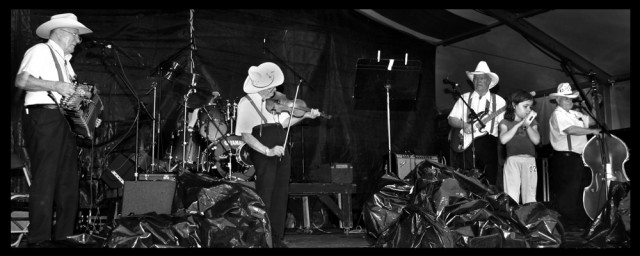
The Hackberry Ramblers performing at New Orleans Jazz & Heritage Festival in 2004. Photo by Gary LoVerde.
The follow-up, Deep Water—released on my own label, Hot Biscuits—was nominated for a Grammy Award as the Best Traditional Folk album of 1997. We all went to the Grammy events in New York. We didn’t win, but had a really great trip, playing live on MTV and sharing the bill at a nightclub with the bluegrass icon Ralph Stanley. Riding in a cab at 4:00 a.m. after an especially glitzy party, Johnny Faulk reflected, “I could get used to this fast lane!”
From then on, the pace quickened as we played the Grand Ole Opry and the Newport Folk Festival, appeared in Europe three times, and went to Washington, DC, where Luderin Darbone and Edwin Duhon received a lifetime achievement award from the National Endowment for the Arts in 2002. Eventually, however, age took its toll on a band with two members in their nineties. Performing out of state became harder, and then impossible, after a final trip to Nashville in 2004. In-state performances grew problematic, too. The Hackberry Ramblers’ last performance took place in Baton Rouge in November 2005, ending a seventy-two-year run.
Looking back, we were all so lucky to have found each other, played together, and traveled safely for so long. I have many, many Hackberry Ramblers stories—and, since people often ask—yes, I will write a book about them.
Ben Sandmel is a New Orleans–based writer, folklorist, producer, and the author of Ernie K-Doe: The R&B Emperor of New Orleans. In May 2018, the LEH honored Sandmel with an award for his Lifetime Contributions to the Humanities. In January 2020 the Folk Alliance International honored Sandmel with a Spirit of Folk Award.
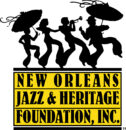 Sound Advice is funded in part by a grant from the New Orleans Jazz & Heritage Foundation.
Sound Advice is funded in part by a grant from the New Orleans Jazz & Heritage Foundation.
